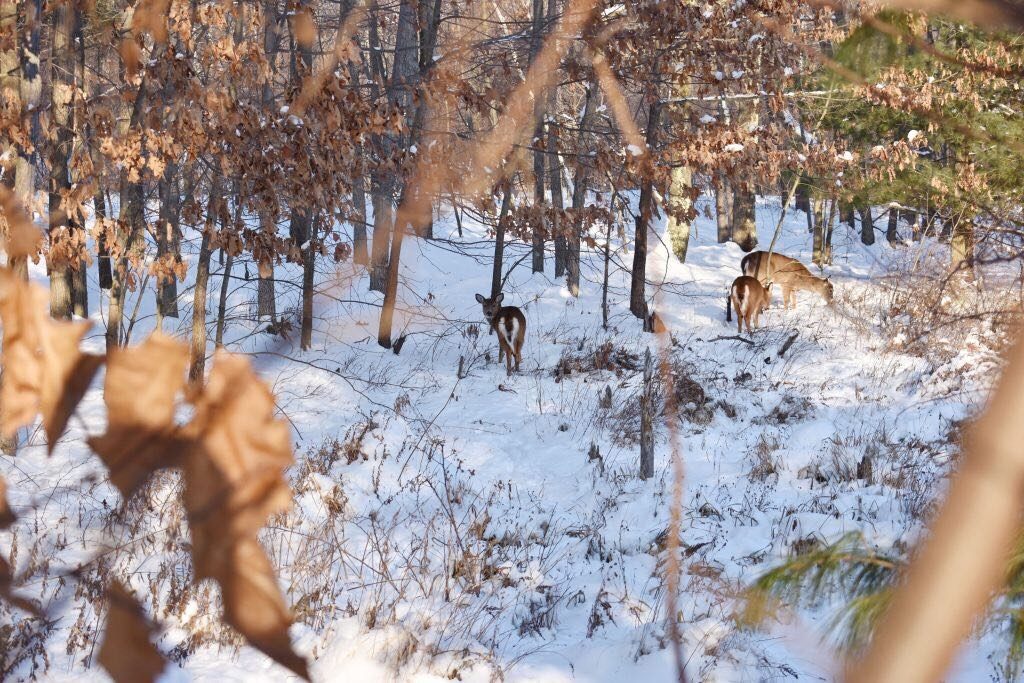
As campus empties for winter break, Binghamton University’s Nature Preserve will be closed for a controlled bowhunt in an effort to fight the overpopulation of deer in the area.
The hunt, which will be conducted from Dec. 16 to 18, is the result of recommendations from the Committee on the University Environment (CUE), which has been working toward a solution for the deer overpopulation problem at BU for roughly seven years.
The overpopulation problem, which has developed over the past 40 years, is a result of a large amount of protected land without any natural predators. There are no wolves or pumas in the Nature Preserve and only a small number of other predators, such as coyotes, which has allowed the deer population to grow on campus. It is estimated that the Nature Preserve is home to at least 175 deer this year, roughly 10 times the number that should be there for a healthy forest ecosystem.
The overpopulation is causing environmental issues within the Nature Preserve. In recent years, the area has lost numerous species of wildflowers and currently lacks a layer of vegetation beneath the main canopy of the forest, disrupting regeneration and causing a decline in various species of ground nesting birds and small mammals, which rely on these plants to survive. The deer have also begun venturing into main areas of campus to find food, habituating them to humans and causing an increased number of car crashes as they cross University roads.
To decrease the deer population, the University plans to conduct a series of controlled hunts over the next several years. According to Dylan Horvath, steward of BU’s natural areas, all of the hunts will follow guidelines and regulations set by New York State Department of Environmental Conservation and the town of Vestal, and the hunts will be held during the winter break, when classes aren’t in session.
“We are facilitating a culture that already occurs on adjacent properties and across the state and country,” Horvath said. “Since this isn’t a cull, this first try isn’t likely to have a significant effect, but if successful, then future years should see more of a reduction.”
During this year’s hunt, 20 to 50 deer will be killed by bowhunters, who were selected by Binghamton’s New York State University Police (UPD), according to a “Frequently Asked Questions” on the hunt released by the University. UPD will be closing off entrances to the Nature Preserve and ensuring students, faculty and community members stay out of the area while the hunt is being conducted.
“A select number of seasoned, experienced bowhunters were selected,” the page read. “If this pilot program goes well, the hunter application process will be opened to a larger number of community members next time.”
The University previously tried to address the overpopulation problem, proposing a cull in 2011, a process where professionals would bait, capture and kill deer. However, the move was met with a lawsuit from Charles Carpenter, a former BU English professor and Vestal resident who lives near the Nature Preserve, and In Defense of Animals (IDA), a national nonprofit organization. The plaintiffs argued the culling would pose “a significant safety risk to the citizens of the area” and that “the University should have conducted a ‘safety study’ prior to deciding,” according to court documents. Ultimately, the State Supreme Court ruled against the University, eliminating the plans for a cull.
This time, the University isn’t planning a cull, and will kill a smaller number of deer in the Nature Preserve. It also created a deer management plan containing research on the deer population in the Nature Preserve and options to handle the issue, which included fencing, translocation and sterilization. Horvath said he worked with CUE to explore these options, but ultimately decided the hunt was the more feasible within the limits of the Nature Preserve, and most ethical for the deer.
“Making these decisions isn’t easy as I love deer, too,” Horvath said. “However, I love other animals and the plants as well. It’s actually more stressful and heartbreaking to watch the forest diminish.”
According to Horvath, the alternate options were difficult to implement because of the size of the Nature Preserve, which spans roughly 182 acres. Additionally, Horvath said he feared options like translocation or sterilization could result in the deer being harmed during the process, and would cause the animals undue stress. Robert Holahan, an associate professor of environmental studies and political science, said the hunt is ultimately necessary to control the large deer population.
“The hunt is absolutely necessary,” Holahan said. “There really aren’t good alternatives considering the sheer size of the herd, so that’s why the University is going with the hunt.”
Although the 2011 plan to cull the deer population was met with resistance from students, this year’s hunt has seen less backlash. Ezra Beede, a sophomore double-majoring in history and philosophy, politics and law, said without significant predators, a controlled bowhunt is appropriate and will help protect the Nature Preserve.
“The deers’ natural predators are gone,” Beede said. “So, even though [a hunt] can sound bad, it’s actually a good thing.”


